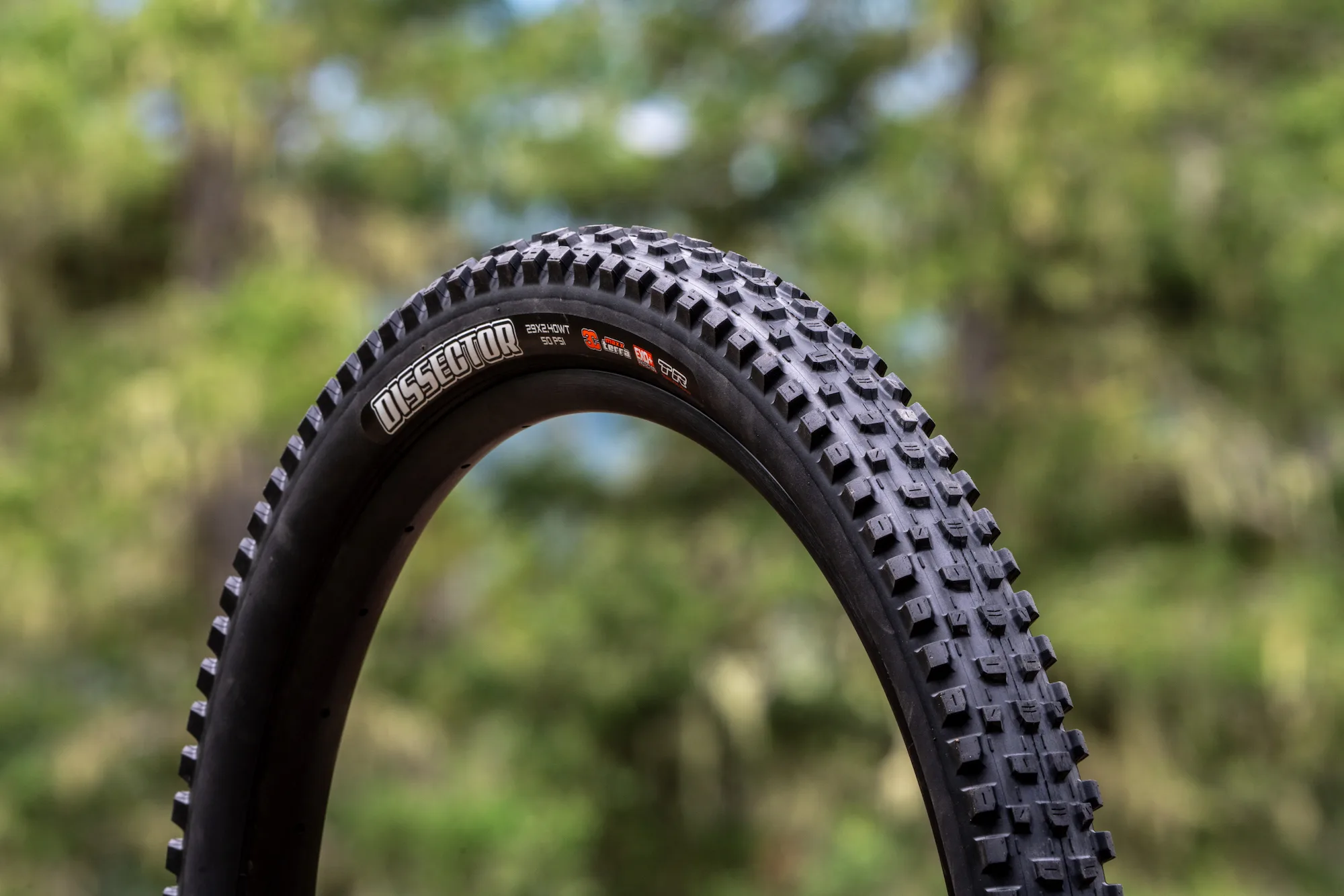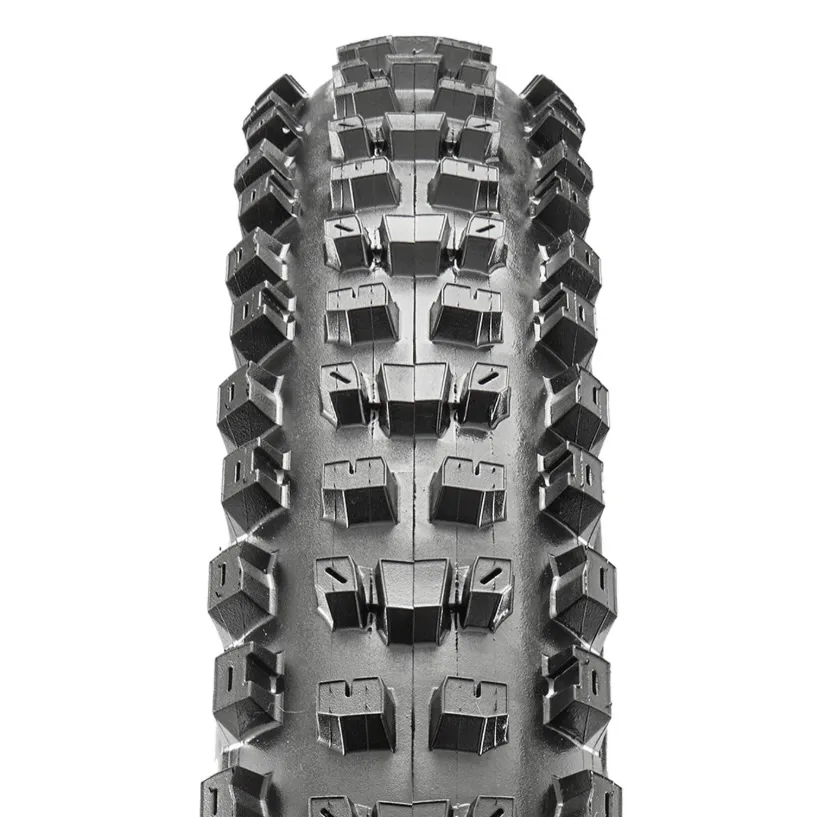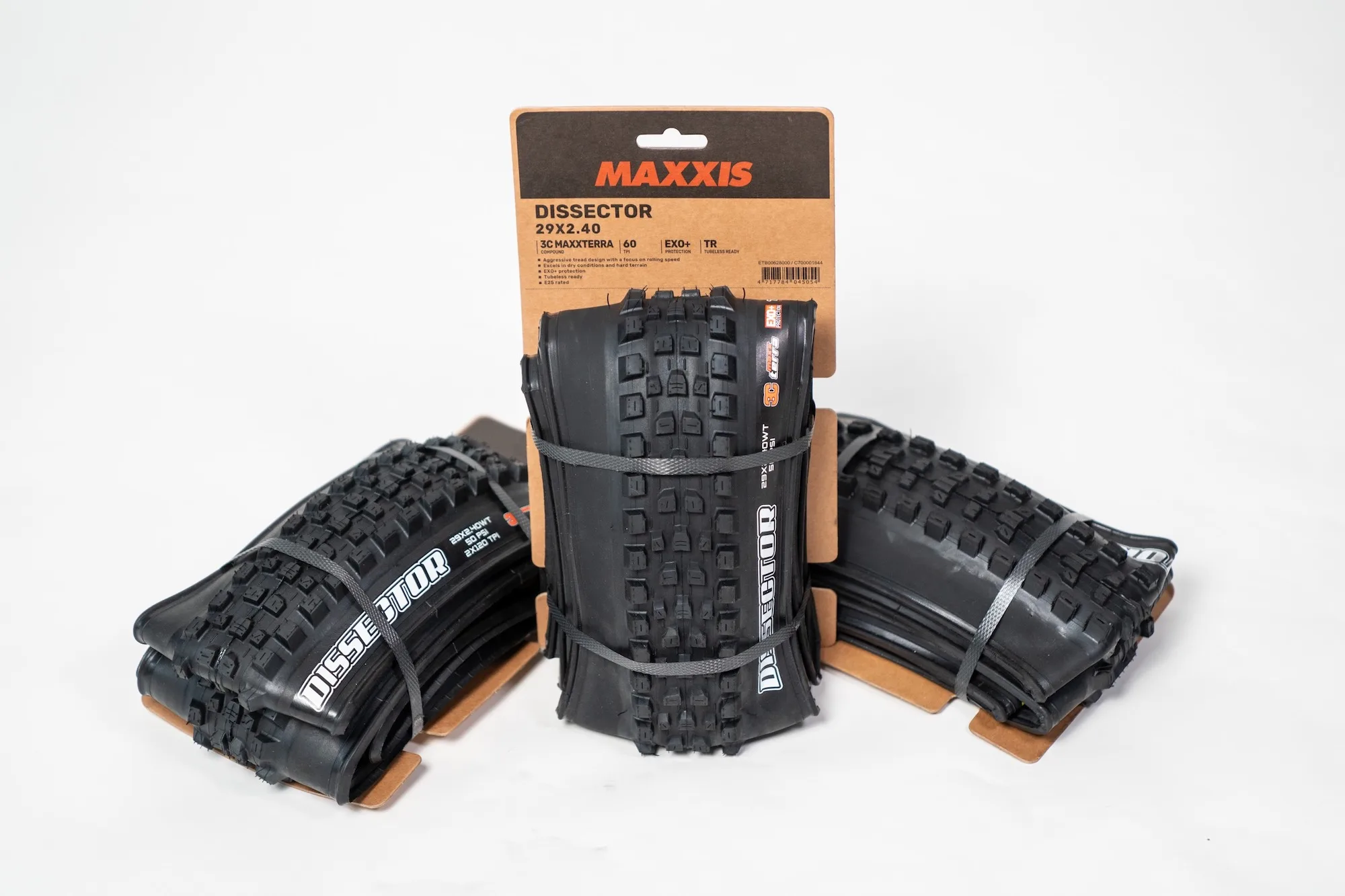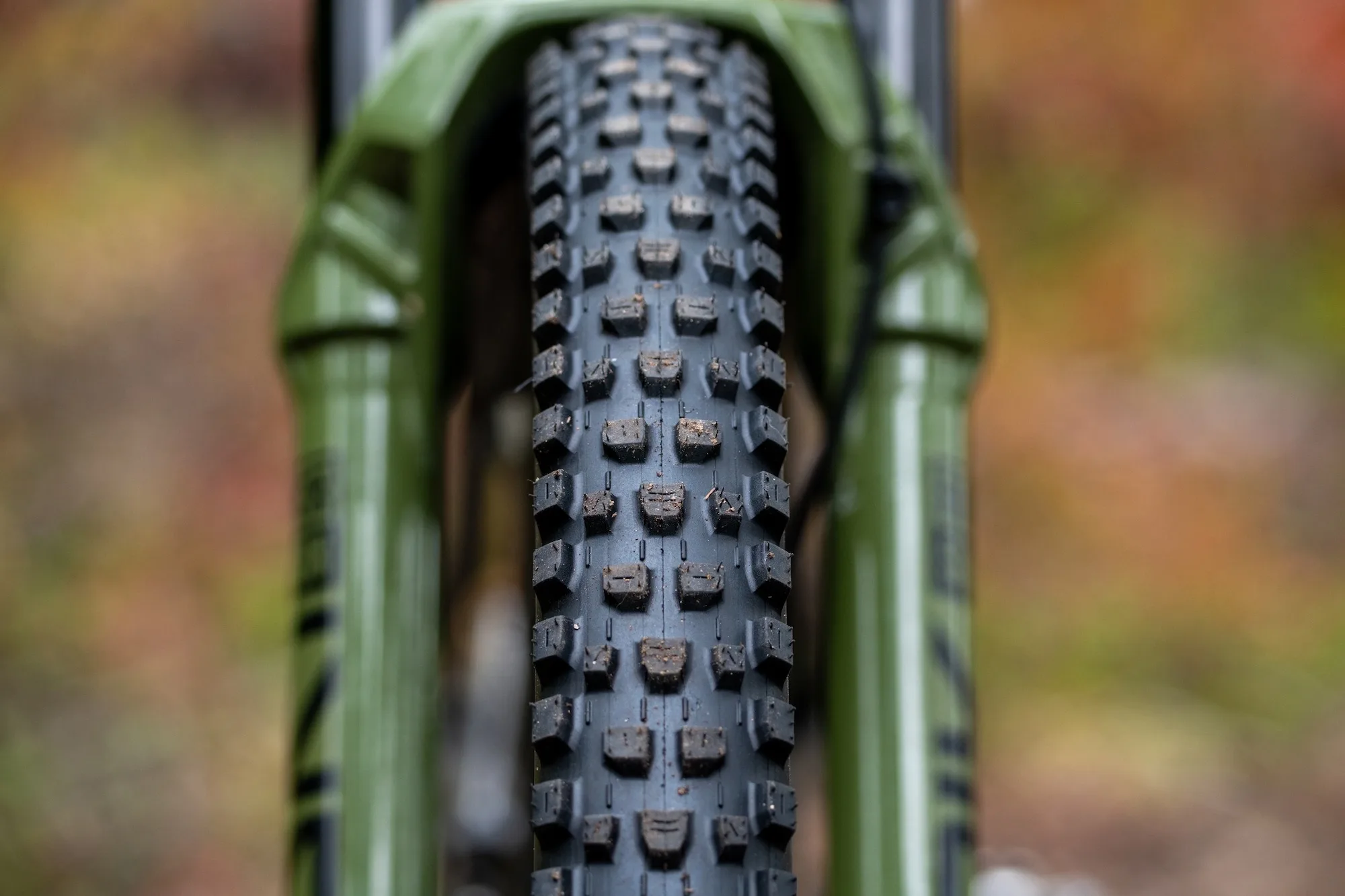The Dissector has been a staple in the Maxxis tire lineup since it debuted back in 2019. The popular trail riding tire just got an overhaul, with updates that aim to improve its performance, cornering traction, braking bite, and predictability, while maintaining its fast-rolling nature. Essentially, the new Dissector is aimed at exactly the same rider and conditions, but hopes to improve on the shortcomings of its predecessor.
When the original Dissector came out six years ago, it was designed with input from World Cup DH rider Troy Brosnan to fill a gap in the Maxxis tire lineup as a relatively aggressive yet faster rolling tire than the brand’s ever-popular Minion DHR II. Although it had a downhill pedigree, it became a popular option for trail riders and was most often spotted on the front and/or rear of mid-travel trail bikes. Indeed, it was a versatile and relatively fast-rolling tire, but some riders found its braking traction and cornering grip to be lacking, with a somewhat vague transition feel.

Maxxis Dissector: What’s New?
In some ways, the new Dissector looks similar to the original, but the tread design has been completely updated to address the issues mentioned above. The familiar 2-3-2 center tread remains, but the blocks of three now have more defined separation. This allows each of those tread blocks to bite into the ground separately when digging for traction on the climbs or on the brakes. It also spreads the blocks into the transition zone (a la Maxxis Assegai), filling in the gap of the previous version, which should improve predictability, consistency, and grip when rolling onto the cornering knobs.


Speaking of cornering, the shoulder knobs have also been redesigned with a larger footprint and reshaped sipes. According to Maxxis, “the new side knobs deliver exceptional stability and predictability — especially when pushing into corners on dry, hardpacked terrain.” It stands to reason that these updated shoulder knobs should combine with more tread in the transition zone to provide more support and traction when engaged in the corners.

What’s the Same?
The 2nd-generation Dissector still slots into the Maxxis tire lineup between the less aggressive Forekaster and the more aggressive Minion DHR II. Like its predecessor, it aims to balance rolling speed and traction and is intended for use mostly in hardpacked and dry conditions.
Also like its predecessor, the new Dissector is intended for use on either the front or rear, or both, depending on your riding style, terrain, and conditions. Suggested pairings include running the Dissector in the front with an even faster-rolling rear tire like the Rekon or the Forekaster. For a more aggressive setup, the Dissector makes a good rear tire option when paired with a Minion DHF or Assegai in the front.

Maxxis Dissector: Options and Weights
The new Dissector is currently being offered in a 29” x 2.4” size only, but Maxxis states that additional sizes are in the works. Casing options include EXO, EXO+, and DoubleDown — the DH casing is no longer an option. Rubber compounds vary depending on the casing. EXO comes in either the long-lasting Dual compound or the faster rolling MaxxTerra. EXO+ and DoubleDown come in MaxxTerra or the tackier MaxxGrip. Claimed weights vary by casing construction and compounds, but are as follows:
- EXO, Dual: 950 grams
- EXO, MaxxTerra: 975 grams
- EXO+, MaxxTerra: 1,030 grams
- EXO+, MaxxGrip: 1,050 grams
- DoubleDown, MaxxTerra: 1,190 grams
- DoubleDown MaxxGrip: 1,205 grams
Maxxis Dissector: Pricing and Availability
The new Maxxis Dissector is available now and in stock at distributors and retailers. Maxxis states that the pricing is in line with comparable tires. Head to the Maxxis website to learn more.
